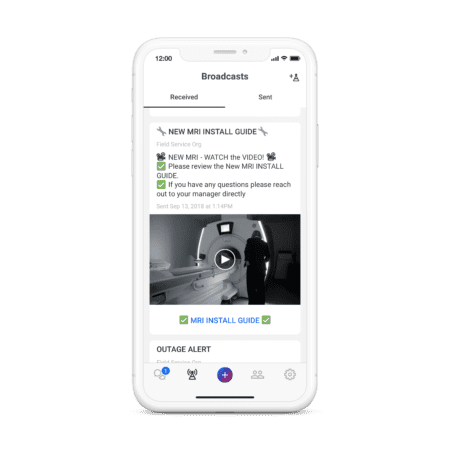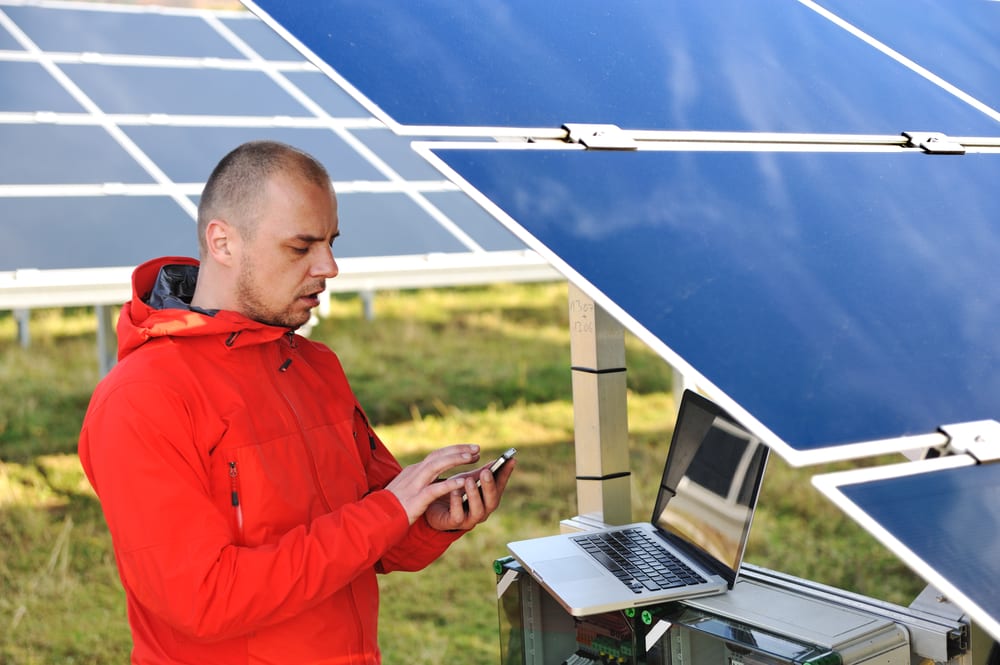When Out of Sight, Out of Mind Is Not The Answer
Deskless workers are everywhere, making up almost 80 percent of the U.S. workforce. They can be found in all types of roles, from field service to hotel staff, and are united by the fact that they don’t sit in front of a desk.
As the front lines of your company, the success of the deskless worker is vital to the success of the business as a whole. That’s why making sure deskless workers feel like they’re part of the team and connected to the larger organization is so important. Without productive, engaged and informed employees on your front lines, there’s no way to hit those big business metrics.
And just because these employees aren’t physically present at the office, doesn’t mean management and leadership should be blind to what they are doing day to day. Whether it’s common problems that arise on the job or operating procedures that could use a refresh, management needs visibility into the daily experiences of deskless workers.
To better connect deskless workers to the larger organization, follow these four best practices for bridging the gap between the office and the field.
1. Use the Right Communication Technology
Day to day, deskless workers are out on the job, either on their own or working directly with customers. They are the ones who need access to real-time communication the most, and yet are the least served by today’s technology.
The email blasts you send your office team aren’t getting read by deskless workers. They aren’t constantly checking email, and when they have a question, they need an answer right away. There is nothing timely about pulling out a laptop to check email, company intranets and the like.
 This distinction means it’s crucial to invest in technology that caters to deskless workforces.
This distinction means it’s crucial to invest in technology that caters to deskless workforces.
Whether your company is in manufacturing, retail, communications, hospitality or healthcare, you need technology that is easy to use and makes communication seamless on a mobile device. If the technology is not familiar and intuitive, there will be low adoption and you are back to square one.
Now, this doesn’t mean getting eight different apps to enable messaging, video conferencing, company news sharing, scheduling, etc. It means leveraging a single platform that ensures employees are always connected to the people, teams, and resources they need to get the job done.
When you are a deskless worker, switching between countless apps is not just frustrating, it’s a waste of time. And in our services-driven economy, there is no room for wasted time.
Customer satisfaction, customer retention, first-time fix rates, time to service — all of these metrics and more are impacted by how quickly and easily deskless workers can communicate and find the resources they are looking for.
Some capabilities to consider are:
- a familiar user experience
- secure peer to peer communication across mobile and desktop
- flexibility to move between different modes like messaging, calling and video calling all in one app
- a searchable directory of everyone at the company
- ability to create official groups for team communication
- ability to send top-down broadcasts for must-read information
- visibility into conversation networks
By having everyone in your company on the same communication platform, there can be a free flow of communication, knowledge, and feedback. This means that while deskless workers aren’t physically present, they are always connected to the larger organization, involved in important conversations, and visible to leadership.
2. Deliver Consistent Top Down Communication

Top-down communication from leadership is essential if you want employees to feel connected to the company and its business objectives. Research shows that directly engaging employees with the company’s vision and goals inspires them to be more productive and high-achieving.
Delivering top-down communication to deskless workers has two aspects. First, you must communicate consistently and always include meaningful information. If the same information gets repeated over and over, or employees are receiving information that doesn’t apply to them, they are going to stop reading it.
Second, you need to deliver the information in a way that will actually be read. Emails, newsletters, intranet updates — these are desk-based worker forms of communication that will go unread. You have to reach deskless workers in a way that is native to the way they work, i.e. via mobile through a company messaging app.
This is where leveraging the right communication technology can make a big difference. Rather than enlisting another app to share safety alerts, updated policies, new manuals or videos from the CEO, you should already be able to do this your communication platform.
With Zinc Real-Time Communication, administrators can send Broadcasts to either a specific group or the entire organization. Broadcasts take over the screen of your mobile device and require you to read and interact with the message to dismiss it. This allows admin to see open rates on messages and ensure everyone has the information they need.
By sending engaging, top-down communication on a consistent basis, you can keep your deskless employees not just safe, but also engaged with what’s going on at the company, driving real business results.
3. Keep Your Finger on the Pulse of Deskless Teams
Just because deskless teams are out of sight, doesn’t mean they should be out of mind. Understanding the day to day challenges employees face is one of the bests ways to constantly improve your business.
Do you know if employees have all the resources they need to do a good job? Or how customers are responding to your new product or service? When you have your finger on the pulse of your organization, you know the answers to these questions without even having to ask.
Today, thousands of hotel staff, field service engineers, home healthcare workers, etc. are using consumer messaging apps to communicate with their teams. All of those conversations are completely invisible to IT and leadership.
If a veteran employee is getting a new text every day about how to install a certain doorbell model, that’s an opportunity to improve the business by broadcasting an installation guide. But if those questions are happening on a consumer app your company has no visibility into, there is no way to know that was needed.
With the entire company on a single communication platform that provides administration and insights, leadership can be constantly tuned-in to employee challenges and find these new ways to improve.
4. Always Show Appreciation
Lastly, it’s a must to recognize your deskless employees for a job well done. Because many types of deskless workers are often out on their own during the day, the job can be quite isolating. Think about it, for desk workers, we can just turn to our neighbor to celebrate our big (or small) wins. But for many deskless workers, there is no coworker to turn to for that high-five.
So as a manager, sending out congratulatory and appreciative messages to your team is a great morale builder. Doing this in a group message is a real-time way to recognize either the whole team or a star employee, and gives them a way to chat and celebrate together.
“When a technician completes an install, they can communicate and celebrate by sending messages back and forth with other team members. Each team has its own culture and ‘heartbeat,’ so to speak because they have access to this communication tool [Zinc].”
-Kyle Christensen, Vivint Smart Homes
Deskless Workers – Out of Sight No More
Being connected to your deskless employees as much as they are connected to the business is all about reaching them in a native, intuitive way. Today that is via a mobile device, and optimizing the way you communicate means leveraging an all-in-one platform.
While the working landscape is always evolving, you can be sure that with the right technology, consistent communication, visibility into the field, and a valued workforce, deskless workers will never feel left out.


Share this: